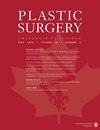A 10-year Retrospective Review of Patient-to-Patient Transmitted Pathogens in Culture-Positive Burn Wounds at a Tertiary Burn Center
IF 0.7
4区 医学
Q4 SURGERY
引用次数: 0
Abstract
Introduction: Burn wound infection can progress to sepsis and is a significant source of morbidity and mortality. Prevalence of multidrug-resistant organisms are high in burn patients; these organisms can be transmitted between patients leading to poor outcomes. Objectives: To characterize patient-to-patient transmission of pathogens causing burn wound colonization at a single tertiary hospital burn center in Hamilton, Canada from 2011 to 2020. Methods: Retrospective chart review of patients admitted to the burn trauma unit at Hamilton General Hospital between 2011 and 2020. Antibiotic susceptibility panels of pathogens cultured from burn patients’ wound swab/tissue cultures were compared against pathogens cultured from other burn/nonburn patients with overlapping admission dates. Pathogens were categorized into likely, possible, or unlikely transmission, or normal skin flora on a case-by-case basis. Results: There were 173 burn patients with positive wound culture and 613 nonburn patients included in the study. Included burn patients had median age 52 years, mostly male (73%) with flame injury (65%), and median total body surface area 18%. There were 18 patients (10%) with likely transmission and 54 patients (31%) with possible transmission. Most frequently implicated pathogens for likely patient-to-patient transmission were methicillin-resistant Staphylococcus aureus (MRSA) (7 patients) and methicillin-resistant coagulase-negative Staphylococci (4 patients). Both burn and nonburn patients were implicated. Conclusion: The burden of patient-to-patient transmission in culture-positive burn wounds was estimated to be between 10% and 41%. Greater care should be taken to avoid patient-to-patient transmission of pathogens to minimize burn infection morbidity and mortality. Prospective studies should be conducted with genomic sequencing and correlation with clinical outcomes.一家三级烧伤中心对培养阳性烧伤伤口中患者间传播病原体的 10 年回顾性研究
导言:烧伤伤口感染可发展为败血症,是发病率和死亡率的重要来源。在烧伤患者中,耐多药生物的流行率很高;这些生物可在患者之间传播,导致不良后果。研究目的描述 2011 年至 2020 年加拿大汉密尔顿一家三级医院烧伤中心导致烧伤创面定植的病原体在患者之间传播的情况。方法对 2011 年至 2020 年期间入住汉密尔顿总医院烧伤创伤科的患者进行回顾性病历审查。将从烧伤患者伤口拭子/组织培养物中培养出的病原体的抗生素敏感谱与从入院日期重叠的其他烧伤/非烧伤患者中培养出的病原体进行比较。病原体根据具体情况分为可能传播、可能传播、不可能传播或正常皮肤菌群。结果:共有 173 名烧伤患者伤口培养呈阳性,613 名非烧伤患者纳入研究。烧伤患者的年龄中位数为 52 岁,大部分为男性(73%),火焰伤(65%),体表总面积中位数为 18%。有 18 名患者(10%)可能被传染,54 名患者(31%)可能被传染。可能在患者间传播的最常见病原体是耐甲氧西林金黄色葡萄球菌(MRSA)(7 名患者)和耐甲氧西林凝固酶阴性葡萄球菌(4 名患者)。烧伤和非烧伤患者均牵涉其中。结论:在培养阳性的烧伤创面中,病人之间的传播率估计在 10% 到 41% 之间。应更加注意避免病原体在患者之间的传播,以尽量降低烧伤感染的发病率和死亡率。应通过基因组测序进行前瞻性研究,并将其与临床结果联系起来。
本文章由计算机程序翻译,如有差异,请以英文原文为准。
求助全文
约1分钟内获得全文
求助全文
来源期刊

Plastic surgery
Medicine-Surgery
CiteScore
1.70
自引率
0.00%
发文量
73
期刊介绍:
Plastic Surgery (Chirurgie Plastique) is the official journal of the Canadian Society of Plastic Surgeons, the Canadian Society for Aesthetic Plastic Surgery, Group for the Advancement of Microsurgery, and the Canadian Society for Surgery of the Hand. It serves as a major venue for Canadian research, society guidelines, and continuing medical education.
 求助内容:
求助内容: 应助结果提醒方式:
应助结果提醒方式:


